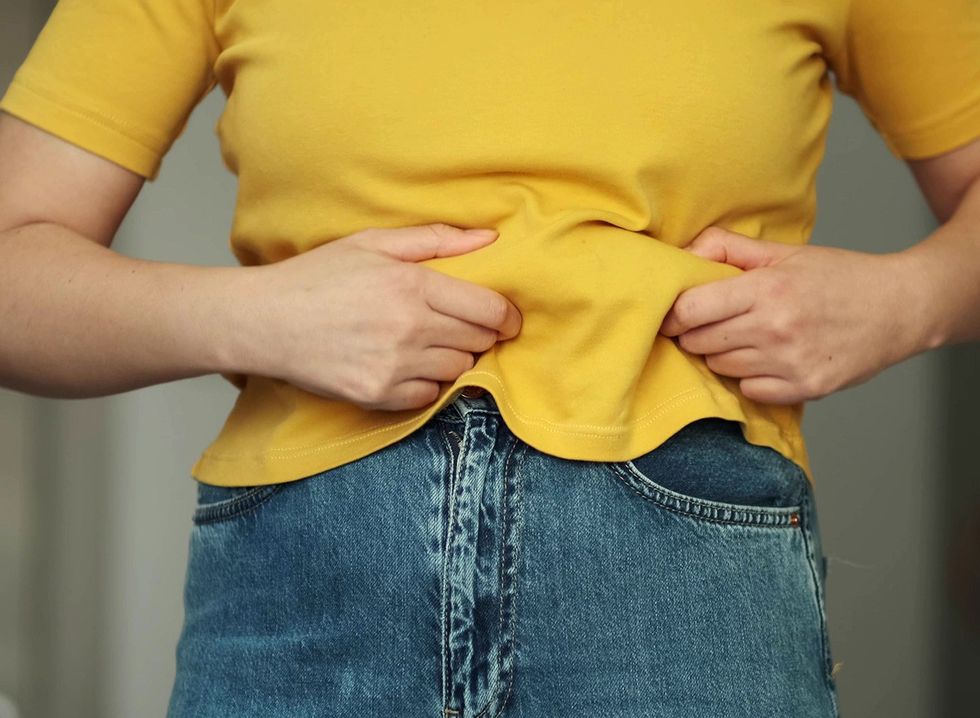Keeping weight off can be just as challenging as losing it in the first place. But what if the secret to long-term success lies in targeting specific hormones that control fat storage and hunger? Certain foods and dietary practices can balance these fat-storing hormones, like insulin and cortisol, making it easier to maintain weight loss. The right diet can reduce hormonal spikes that lead to fat storage, keep cravings in check, and improve energy levels, all of which help in achieving lasting weight management. Here’s how this hormone-targeted diet works and which strategies can help you lose weight and keep it off.
Prioritize Protein for Stable Insulin Levels

Prevent Blood Sugar Spikes
Protein helps stabilize blood sugar, preventing insulin spikes that often lead to fat storage, particularly around the belly. By including lean protein at each meal, you avoid the sharp blood sugar changes that can trigger cravings and promote fat gain. Eggs, fish, and lean meats are all great options to keep insulin levels steady.
Include Healthy Fats to Manage Hunger Hormones

Balance Ghrelin and Leptin
Healthy fats, such as those from avocado, olive oil, and nuts, support the regulation of ghrelin (the hunger hormone) and leptin (the satiety hormone). These fats help keep you satisfied, so you’re less likely to overeat. By controlling hunger hormones, you can naturally reduce calorie intake, aiding in weight maintenance.
Focus on High-Fiber Foods for Cortisol Control

Reduce Stress-Related Fat Storage
High-fiber foods like oats, beans, and leafy greens help control cortisol levels, a stress hormone linked to belly fat storage. Fiber promotes a healthy gut and stabilizes blood sugar, both of which help keep cortisol in check. Lowering cortisol can reduce the likelihood of stress-induced weight gain, particularly in the abdominal area.
Limit Added Sugars to Avoid Insulin Surges

Prevent Fat Storage
Sugary foods and beverages cause quick insulin spikes, which lead to increased fat storage if consumed frequently. By cutting back on added sugars, you prevent insulin from signaling your body to store excess calories as fat. Instead, opt for whole fruits when you need a sweet fix.
Drink Green Tea for Fat-Burning Support

Boosts Metabolism with Catechins
Green tea is rich in catechins, antioxidants that help balance insulin levels and stimulate fat burning. Regularly drinking green tea can increase your metabolism, making it easier to burn fat while keeping insulin balanced, both of which are beneficial for weight maintenance.
Stay Hydrated to Support Metabolism and Hormone Health

Flush Out Toxins and Balance Hormones
Water plays a key role in balancing all bodily systems, including the hormonal systems that regulate hunger and metabolism. Staying hydrated ensures that your body efficiently processes nutrients, balances hormones, and prevents false hunger cues, all of which aid in keeping weight off.
Embrace Intermittent Fasting to Regulate Insulin Sensitivity

Improves the Body’s Response to Insulin
Intermittent fasting has been shown to enhance insulin sensitivity, helping your body process sugar more efficiently without storing it as fat. By having designated eating windows, you give your body time to burn stored fat, which can improve weight management and reduce insulin-related fat gain.
RELATED:Trainer Says This 30-Minute “Fat-Burning Walk” Works Better Than Running
Get Adequate Sleep to Keep Hunger Hormones in Check

Support Leptin and Ghrelin Balance
Lack of sleep disrupts hunger hormones, leading to increased cravings and appetite. Aim for 7–8 hours per night to keep leptin (satiety hormone) levels high and ghrelin (hunger hormone) levels low, which naturally supports weight maintenance. Following these hormone-focused diet strategies can help you not only lose weight but keep it off for good. By targeting specific fat-storing hormones, you can create an environment in your body that favors fat-burning and reduces the likelihood of weight gain, making it easier to maintain a healthy weight in the long term. And if you enjoyed this article, take advantage of these 15 Quick Ways to Lose Body Fat Percentage in a Week.















 Shutterstock
Shutterstock Shutterstock
Shutterstock Shutterstock
Shutterstock Shutterstock
Shutterstock Shutterstock
Shutterstock Shutterstock
Shutterstock Shutterstock
Shutterstock Shutterstock
Shutterstock
 Shutterstock
Shutterstock Shutterstock
Shutterstock Shutterstock
Shutterstock Shutterstock
Shutterstock Shutterstock
Shutterstock Shutterstock
Shutterstock Shutterstock
Shutterstock Shutterstock
Shutterstock Shutterstock
Shutterstock Shutterstock
Shutterstock Shutterstock
Shutterstock Shutterstock
Shutterstock

 Shutterstock
Shutterstock Shutterstock
Shutterstock Shutterstock
Shutterstock Shutterstock
Shutterstock Shutterstock
Shutterstock Shutterstock
Shutterstock

 I'm a Nutritionist and These 9 High-Protein Snacks Keep My Clients Full While Losing 50 Pounds
I'm a Nutritionist and These 9 High-Protein Snacks Keep My Clients Full While Losing 50 Pounds
 Shutterstock
Shutterstock 2. Processed FoodsShutterstock
2. Processed FoodsShutterstock Shutterstock
Shutterstock Shutterstock/Prostock-studio
Shutterstock/Prostock-studio Shutterstock
Shutterstock Pro TipsShutterstock
Pro TipsShutterstock Shutterstock
Shutterstock Shutterstock
Shutterstock Shutterstock
Shutterstock Shutterstock
Shutterstock Don’t Drink as Much AlcoholShutterstock
Don’t Drink as Much AlcoholShutterstock Most Women on GLP-1s Are Making a Few Common MistakesShutterstock
Most Women on GLP-1s Are Making a Few Common MistakesShutterstock Soda and Sugary DrinksShutterstock
Soda and Sugary DrinksShutterstock Shutterstock
Shutterstock Eat BreakfastShutterstock
Eat BreakfastShutterstock And Improve Insulin SensitivityShutterstock
And Improve Insulin SensitivityShutterstock Belly Flab Strip Tip: Sugar and Fat Calories Leave Its Mark on Your BodyShutterstock
Belly Flab Strip Tip: Sugar and Fat Calories Leave Its Mark on Your BodyShutterstock Shutterstock
Shutterstock The Drugs Mimic the GLP-1 Hormone Naturally Produced by the BodyShutterstock
The Drugs Mimic the GLP-1 Hormone Naturally Produced by the BodyShutterstock 3. Deep-Fried ItemsShutterstock
3. Deep-Fried ItemsShutterstock